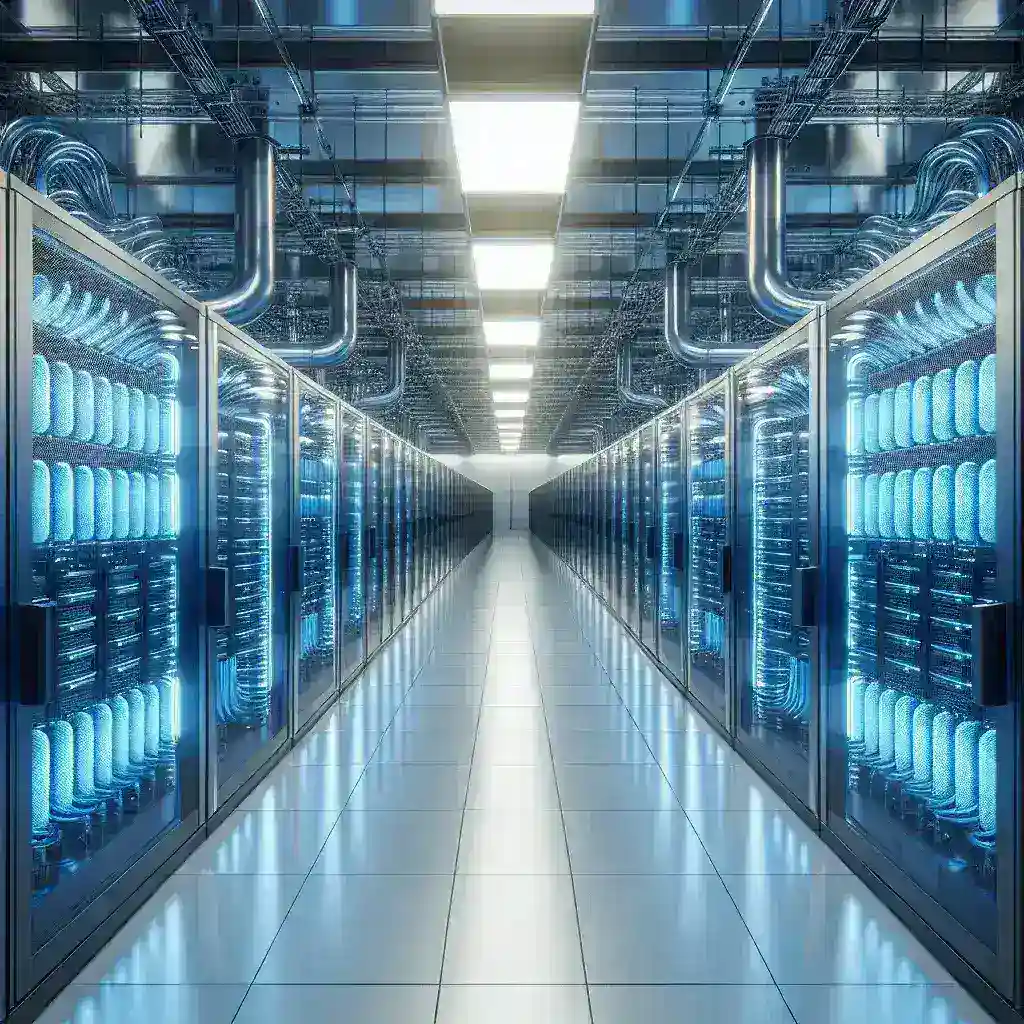Introduction
In a bold move to address the ever-growing demands of modern computing, Intel has introduced its latest innovation: liquid-cooled data center racks specifically designed for hyperscale providers. As the digital world expands, the need for efficient, high-performance computing solutions is more crucial than ever. This article delves into the details of Intel’s new offering, exploring its features, advantages, and the potential impact on the data center landscape.
The Evolution of Data Centers
Data centers have witnessed a significant transformation over the past few decades. Initially designed as simple warehouses for servers, they have evolved into complex facilities that house thousands of servers and network equipment. With the advent of cloud computing, big data, and the Internet of Things (IoT), the demand for computing power has skyrocketed.
Historical Context
The journey of data centers began in the 1960s with mainframe computers, which required substantial maintenance and cooling. As technology progressed into the 1990s and beyond, data centers began to adopt more sophisticated cooling solutions, including traditional air conditioning systems. However, as server density increased, these systems struggled to keep up, leading to inefficiencies and increased operational costs.
Challenges Faced by Traditional Cooling Systems
- Heat Generation: As server workloads increase, so does the heat generated. Traditional air cooling systems often cannot dissipate this heat efficiently.
- Energy Consumption: Cooling systems require substantial energy, contributing to higher operational costs and increasing the carbon footprint.
- Space Limitations: Traditional cooling solutions often take up significant space, which is at a premium in modern data centers.
Intel’s Liquid-Cooled Data Center Racks
Intel’s latest liquid-cooled racks aim to solve these challenges by leveraging advanced cooling technology. By using liquid to cool the components, these racks offer several benefits:
Key Features
- Enhanced Cooling Efficiency: Liquid cooling can transfer heat away from hot components more effectively than air cooling, reducing the risk of overheating.
- Reduced Energy Consumption: By optimizing cooling, Intel’s liquid-cooled racks can significantly lower energy costs associated with cooling.
- Increased Density: These racks can support higher server densities, allowing hyperscale providers to maximize their available space.
- Modular Design: The modularity of these racks makes them easier to integrate into existing infrastructures, providing flexibility for data center operators.
Benefits for Hyperscale Providers
For hyperscale providers, the introduction of Intel’s liquid-cooled data center racks represents a significant advancement. Here are some of the potential benefits:
- Improved Performance: With better cooling comes better performance. Reduced thermal throttling leads to enhanced speeds and efficiencies.
- Lower Total Cost of Ownership (TCO): By reducing energy consumption and enhancing performance, these racks can lower the overall TCO for data center operators.
- Sustainability: With a focus on energy efficiency, this solution helps hyperscale providers meet their sustainability goals, potentially reducing their carbon footprint.
Real-World Applications
Intel’s liquid-cooled racks are poised to have a substantial impact on various industries:
Cloud Computing
As cloud service providers continue to grow, the demand for efficient data centers will only increase. Liquid cooling can enable these providers to operate at higher efficiencies, catering to the needs of their clients.
Artificial Intelligence (AI) and Machine Learning (ML)
AI and ML applications require massive computational power and can generate significant heat. Liquid-cooled racks can support the computational requirements while maintaining optimal temperatures.
Telecommunications
The rise of 5G technology demands advanced data center solutions to process data at unprecedented speeds. Intel’s liquid-cooled racks may play a crucial role in supporting the infrastructure needed for 5G.
Future Predictions
As Intel continues to innovate, the future of data centers seems promising. The adoption of liquid cooling may pave the way for:
- Wider Adoption of Advanced Cooling Solutions: As more companies recognize the benefits of liquid cooling, we may see a shift away from traditional air cooling methods.
- Increased Focus on Sustainability: Data centers will continue to face scrutiny regarding their environmental impact, making energy-efficient solutions essential.
- Enhanced Integration of AI and Automation: Liquid-cooled data centers could incorporate more AI-driven management systems, optimizing cooling and performance in real-time.
Conclusion
Intel’s debut of liquid-cooled data center racks for hyperscale providers marks a significant milestone in the evolution of data center technology. With enhanced cooling efficiency, reduced energy consumption, and increased server density, these racks are set to transform the way data centers operate. As the demand for computing power continues to grow, innovations like Intel’s liquid-cooled racks will be essential in meeting the challenges of tomorrow’s digital landscape.

